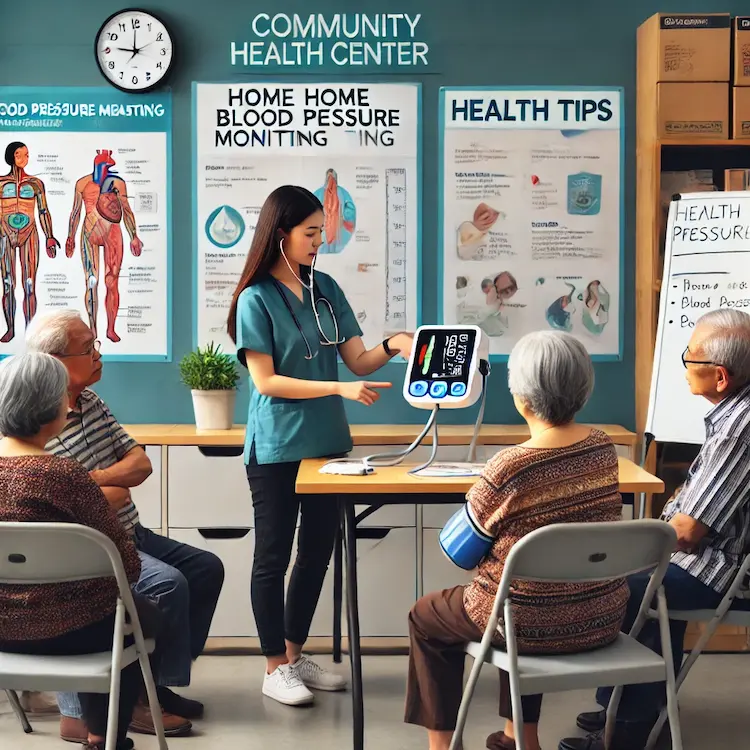Home Blood Pressure Monitoring (HBPM) is a critical tool for managing hypertension, especially among older adults. With hypertension being a leading cause of heart disease and stroke, regular monitoring can save lives and improve quality of life. This article delves into the importance of HBPM, its societal impacts in the Philippines, and practical advice for implementation.
Why HBPM Matters for Older Adults
Understanding Hypertension in Older Adults
Hypertension, or high blood pressure, is prevalent among older adults due to age-related changes in the cardiovascular system. Left unmanaged, it increases the risk of:
- Heart attacks
- Stroke
- Kidney failure
In the Philippines, a 2021 study revealed that 37% of the population suffers from hypertension. Among older adults, this percentage is significantly higher. However, many cases remain undiagnosed or poorly managed, highlighting the need for accessible tools like HBPM.
Societal and Economic Impacts in the Philippines
Public Health Challenges
Hypertension management places a heavy burden on the healthcare system. Regular monitoring through HBPM can:
- Reduce hospital visits
- Prevent complications
- Improve patient outcomes
Economic Benefits
HBPM is cost-effective compared to frequent clinic visits or emergency care. In a country like the Philippines, where healthcare access can be uneven, HBPM offers an affordable solution for long-term disease management.
Cultural Considerations
Filipinos often live in multigenerational households, making HBPM a family-focused health strategy. Educating families about hypertension management ensures better care for older adults.
Methods of Blood Pressure Monitoring
Clinic-Based Monitoring
Advantages:
- Conducted by professionals
- Immediate medical advice
Limitations:
- Infrequent monitoring
- White-coat syndrome (elevated readings due to stress)
Ambulatory Blood Pressure Monitoring (ABPM)
Advantages:
- Continuous 24-hour monitoring
- Captures blood pressure variations
Limitations:
- Expensive
- Limited availability
Home Blood Pressure Monitoring (HBPM)
Advantages:
- Convenient and frequent monitoring
- Reduces white-coat effect
- Cost-effective
Limitations:
- Requires proper training for accuracy
- Potential for user error
Among these, HBPM is the most practical option for older adults in the Philippines, balancing affordability and accessibility.
Choosing the Right HBPM Device
Selecting the right device ensures accurate and reliable readings. Key factors include:
- Validation: Choose a clinically validated device.
- Cuff Size: Ensure proper fit for accurate measurements.
- Ease of Use: Opt for simple, user-friendly devices.
- Memory Storage: Devices with memory can track readings over time.
The American Heart Association recommends upper-arm, automatic cuff-style monitors for home use.
Practical Tips for Effective HBPM
Accurate measurements depend on proper techniques. Follow these steps:
Preparation
- Avoid caffeine, exercise, or smoking 30 minutes prior.
- Rest for 5 minutes before measuring.
Proper Positioning
- Sit upright with feet flat on the floor.
- Place the cuff on the bare upper arm at heart level.
Measurement
- Take readings at the same time each day.
- Record multiple readings for consistency.
Maintenance
- Regularly calibrate the device.
- Store the monitor in a safe, dry place.

Relevant Statistics and Trends in the Philippines
Hypertension Prevalence
- Hypertension affects 37% of the population.
- Awareness among hypertensive older adults is at 61.6%, while control rates are as low as 37%.
Economic Impact
- HBPM adoption can significantly reduce healthcare costs, particularly in rural areas where access to clinics is limited.
Behavioral Insights
Educating Filipinos about HBPM can overcome cultural barriers, such as reliance on traditional medicine, and promote modern health practices.
Summary of Key Takeaways
- HBPM is a vital tool for managing hypertension in older adults, especially in the Philippines.
- It reduces healthcare costs, empowers individuals, and improves disease management.
- Choosing the right device and following best practices ensures accurate monitoring.
Actionable Recommendation: Start using a validated HBPM device and involve family members in monitoring to ensure comprehensive care.
